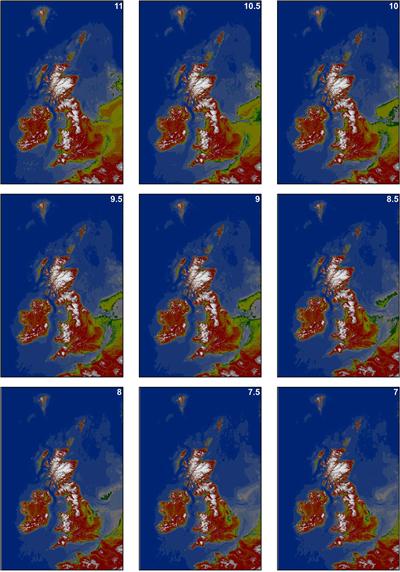As part of the University of Southampton, COARS continues to be actively involved in innovative research and development. Our research can be divided into two principle themes: methodology development and applied techniques.

Methodology development
Research funding has permitted the development of new marine geoarchaeological approaches to be developed to aid the investigation, characterisation and interpretation of the wider submerged archaeology (beyond just wrecks) of the continental shelf. Such research included:
- High resolution sonar for the archaeological investigation of marine aggregate deposits
- Modelling Exclusion Zones for Marine Aggregate Dredging
- Development of a Regional Sediment Mobility Model for Submerged Archaeological Sites
Research funded by the Resource Management Association (an industry consortium of Cemex UK Marine Ltd, Hanson Aggregates Marine Ltd and Tarmac Marine Dredging Ltd) developed new techniques for extracting sediment transport data from swath bathymetry. Such data can be used in hydrodynamic and sediment transport models of the whole shelf and major dredged sandbank systems, and has been applied in the Eastern English Channel and the Severn Estuary. The later have been specifically designed for the management of both wreck and submerged landscape cultural heritage assets.
We have also been actively involved in the technological development of a 3D Chirp system and have worked on a series of case studies on offshore geological targets and geohazards (eg. lacustrine debris flows and marine slope instability). Use of 3D Chrip has also been funded by the MOD to identify the presence of unexploded ordnance and other objects within a harbour basin.
Our staff played an important role in developing English Heritage’s recently published Maritime Research Agenda, acting as both editors and contributors. The volume considers all aspects of our maritime heritage, from the submerged landscapes created by changes in sea-level over the last million years, to the physical development of the modern coastline, through ports, their hinterlands, and associated maritime communities. This volume provides an unrivalled exploration of our maritime heritage and helps define the agenda for future research.
We have also been developing methodologies for the application of large-scale archaeological deposit modelling, for both onshore and offshore contexts, using existent stratigraphic data, with ongoing projects as part of English Heritage’s National Heritage Protection Plan (NHPP) activities 3A1 and 4G1.

Applied techniques
The application of these methodologies is clearly demonstrated by their extensive publication record. Notable projects include recent investigations, in conjunction with the Natural History and British Museums (AHOB project), into the offshore components of Britain's oldest hominin occupation sites located at Pakefield and Happisburgh, Norfolk. Similarly, the Stepping Stones Project seeks to answer important research questions about the arrival of the Neolithic in and around Britain and Ireland c. 4000 BC, investigating key sites in the Channel Islands, the Isles of Scilly and the Outer Hebrides.
In addition, our staff have been actively involved with a number of European Union funded initiatives, including the Managing Cultural Heritage Underwater (MACHU) and LIFE 2 Coastal Change, Climate and Instability projects.
Further details of research undertaken by staff at COARS can be found at: